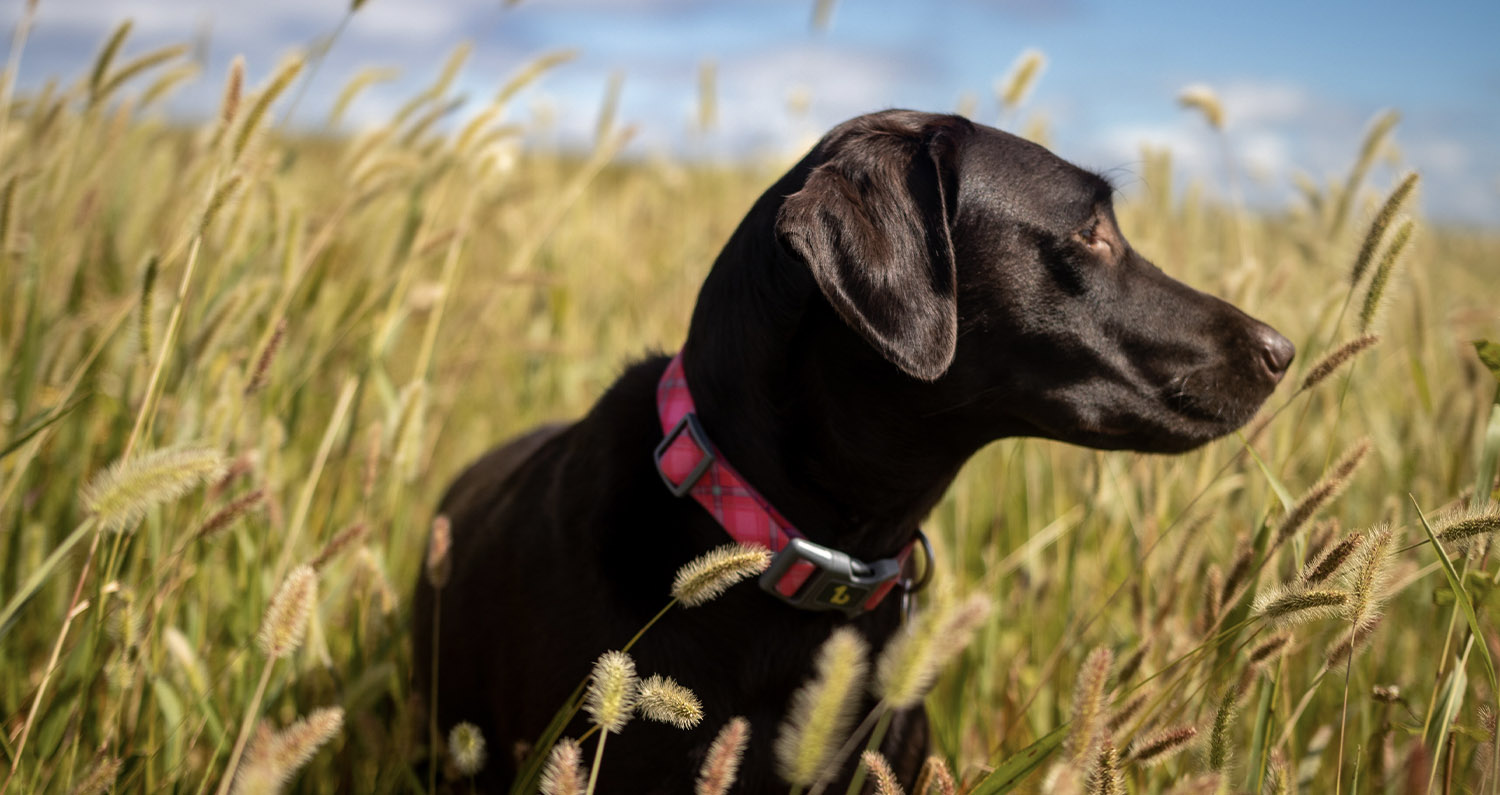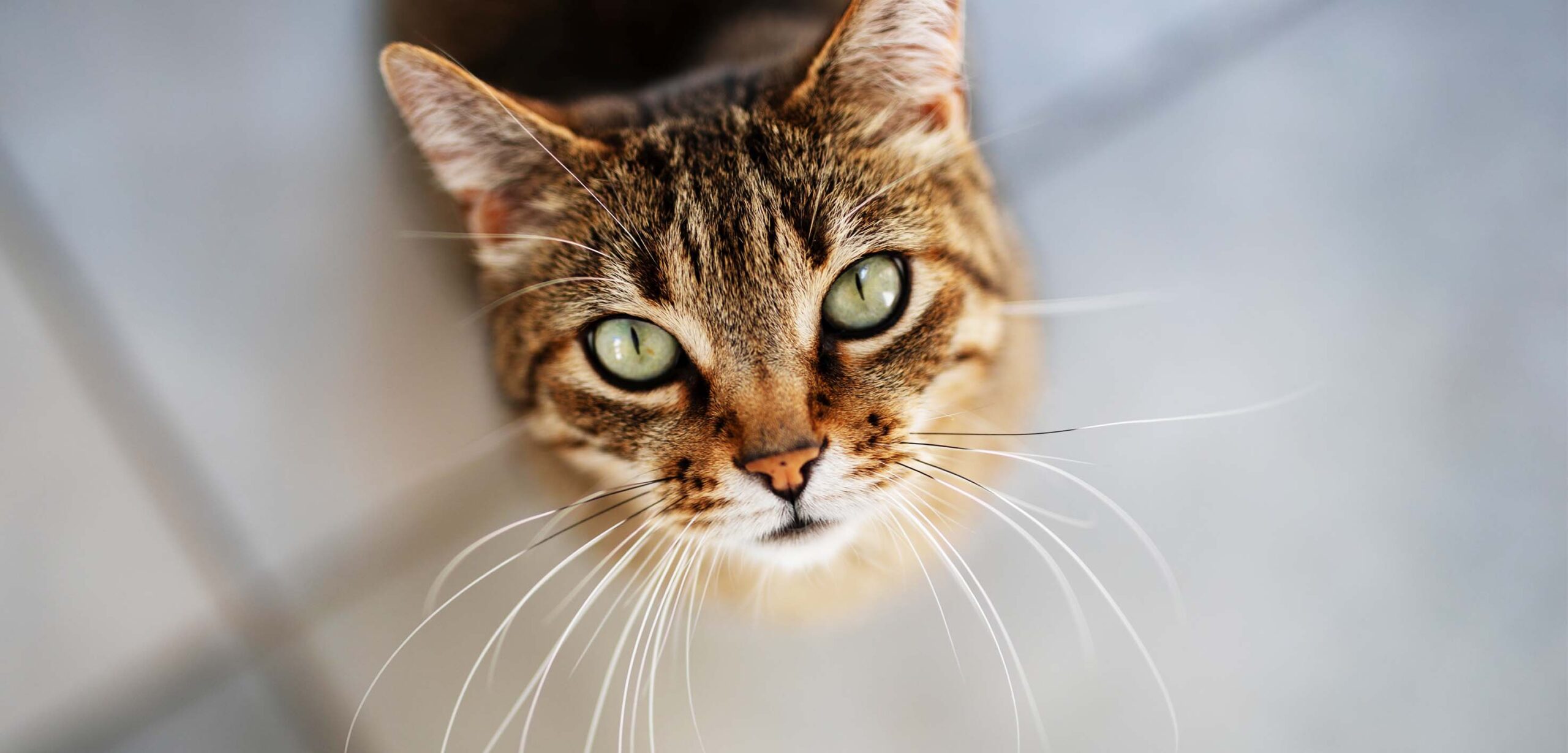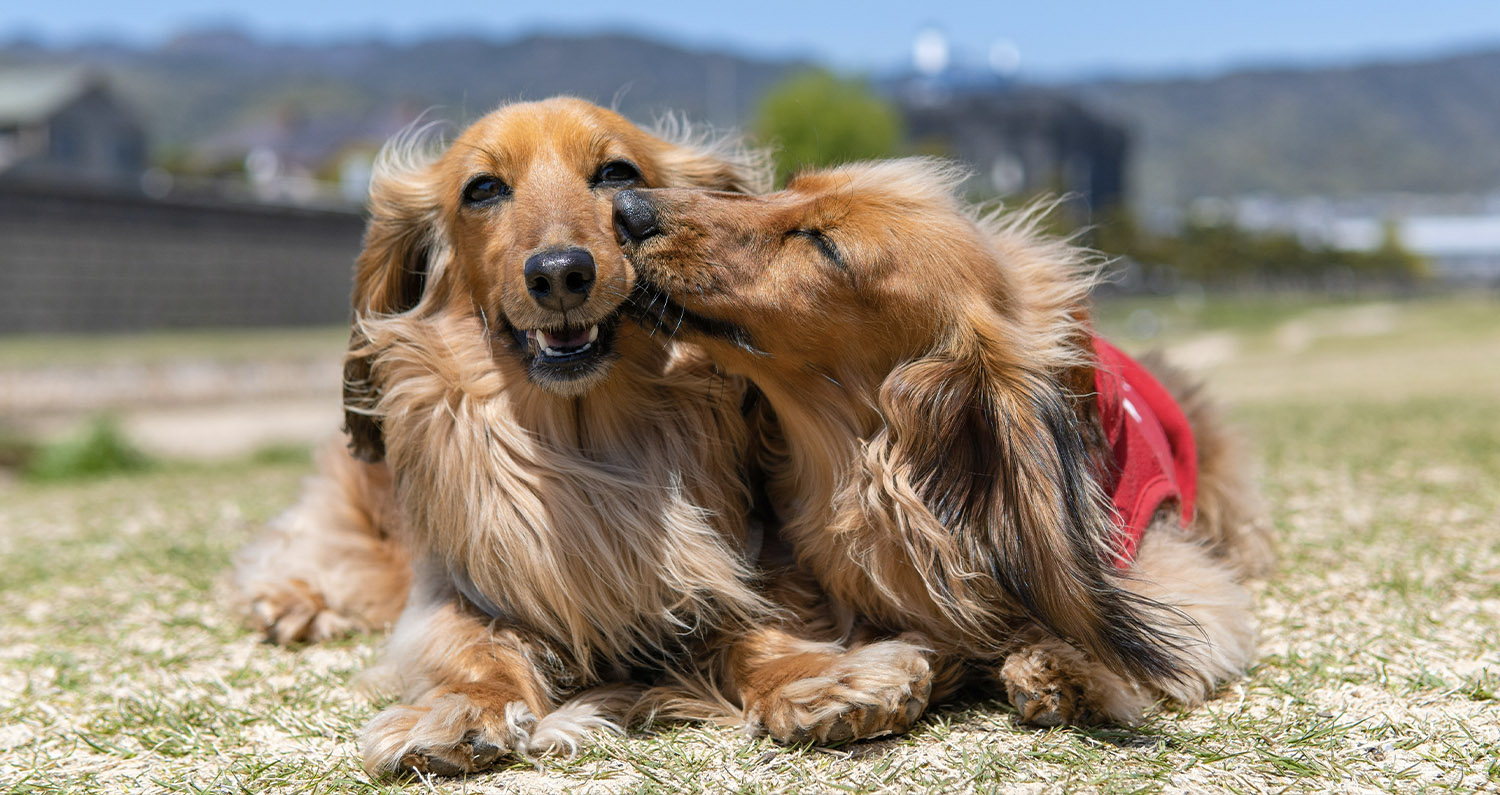Anxiety isn’t uncommon in people or their four-legged counterparts. Every dog will experience it at some point and any anxious behavior in a dog can worsen if not met with a plan to help them cope.
This is where both Western and Eastern perspectives share common ground. The focus is on easing the stress and anxiety and the number of behaviors that manifest from those feelings.
But it’s how each goes about doing this that differs.
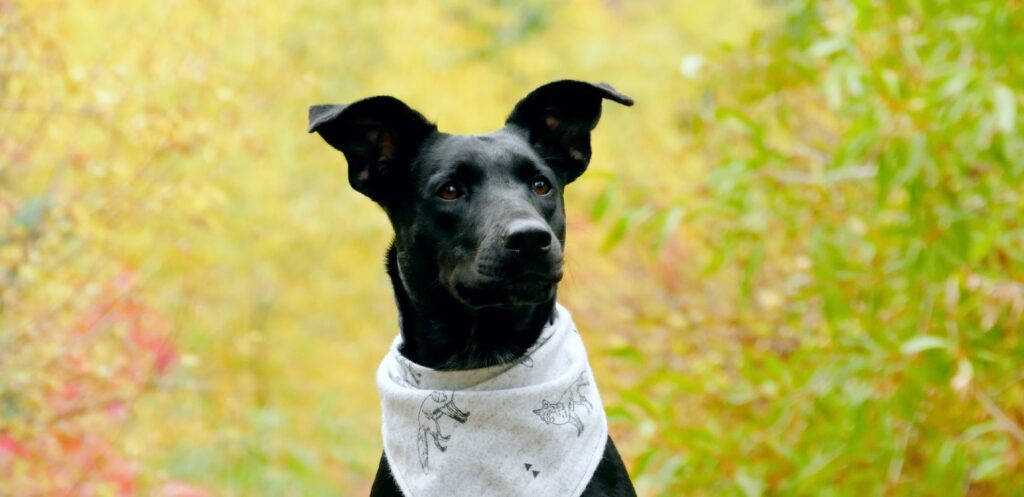
On The Agenda
Anxiety is directly connected to emotion, and emotion affects health. It’s something that western medicine often forgets or even disregards, but Traditional Chinese Veterinary Medicine (TCVM) addresses.
With over 30 years of veterinary experience, Dr. Bessent has found the most success utilizing this school of thought when helping anxious dogs.
Looking more closely at behavior, we can better evaluate how excessive emotional or bodily stress influences the physical, starting with a dog’s own personality traits.
Five Element Theory & How Personality Factors into Anxiety
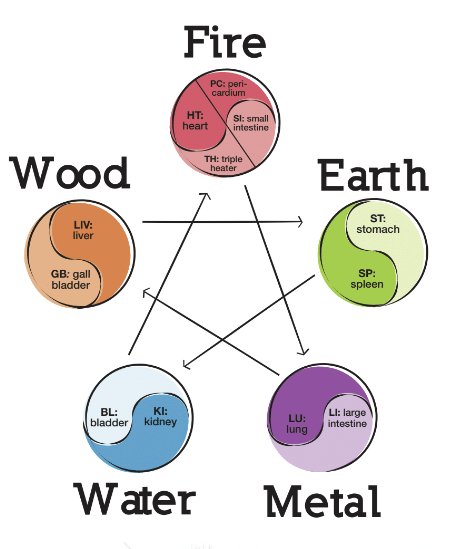
Each living being– you, your dog, his dog park cohorts has personality traits. And these correlate to a specific element– wood, earth, metal, water, and fire. The type of element related to each dog ties to their emotional disharmonies as well.
Certain elements control others–water controls fire, for instance. But all are cyclically affected by each other. Your dog’s trait(s), their constitution, offers insight into their disharmonies or tendencies, too.
Editors’ Note: Keep in mind that dogs can share characteristics of elements and while certain breeds seem prone to personas Australian Shepherds– undeniably fire dogs– any breed can fall under any of the elements.
Wood dogs are the jocks– lean, muscular, and athletic who thrive on the adrenaline of movement. They are tied to the liver organ so if they are overworked they can become irritable.
Earth dogs are gentle souls. They’re maternal, nurturing, and completely devoted- the Goldens of the world. Their emotional disharmonies are worry and obsession which can lead to gi upset since their organ is the spleen/stomach.
Metal dogs are the hall monitors. They’re duty-bound, no-nonsense dogs who thrive with a routine and a job well done. They are our German Shepherds whose emotional disharmonies are grief and organ the lung/large intestine, which is why they can be prone to seasonal allergies
Water dogs are independent even wily. They’re the dumpster divers, the troublemakers who make messes and don’t help clean them up. Their emotional disharmony is fear of the new and unknown. Their organ is the kidney/bladder, which is why they’re prone to bladder infections.
And those fire dogs, the four-legged life of the party, the (a)woo girls, the personality types whose constitutions are emotional and easily excitable, have disharmonies that cause excessive emotional, and in turn, physical stress.
They’re quick to overheat with overexcitement and prone to heart and circulatory issues. Being easily excitable and stressed can quickly manifest into anxiety.
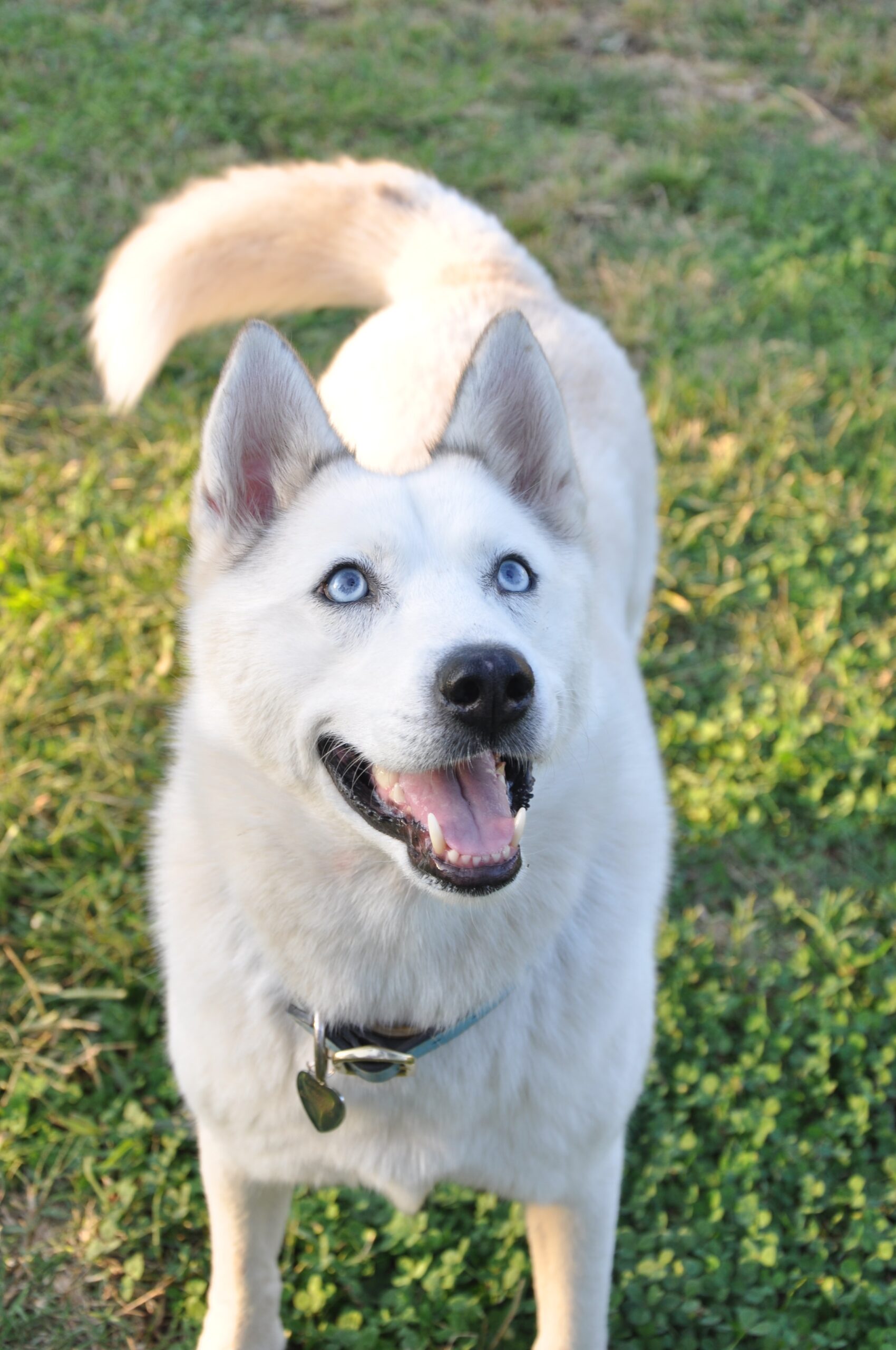
Anxiety From A Traditional Chinese Veterinary Medicine Perspective
The five elements are applied not only to our personality traits but to the body as well. Each element is associated with a specific organ in the body; to be more precise, each element has specific solid and hollow organs related to it, typically to accent the yin and yang of each element.
Canine anxiety is believed to be tied between water (the kidney and bladder) and fire (the small intestine, pericardium, and heart).
Since these organs tie to anxiety, it’s important to understand the functions of the heart and kidney from both a western and eastern perspective.
The heart has two main functions. First, it oversees the blood and vessels, circulating blood throughout the body propelled by the rhythmic beating of the heart. Secondly, the heart oversees ‘shen’– the mental activities of the brain, including emotions, mood, will, and consciousness.
The heart is tied to the fire element in Chinese medicine since it propels functions, circulates blood, and invigorates the heart ‘shen’ or what western medicine would refer to as our mental and cognitive health.
The kidney has many functions. First, it stores essence, or what western medicine would refer to as growth and development, and blood generation (red blood cells from a western perspective). It also oversees water– regulating the water metabolism in our bodies.
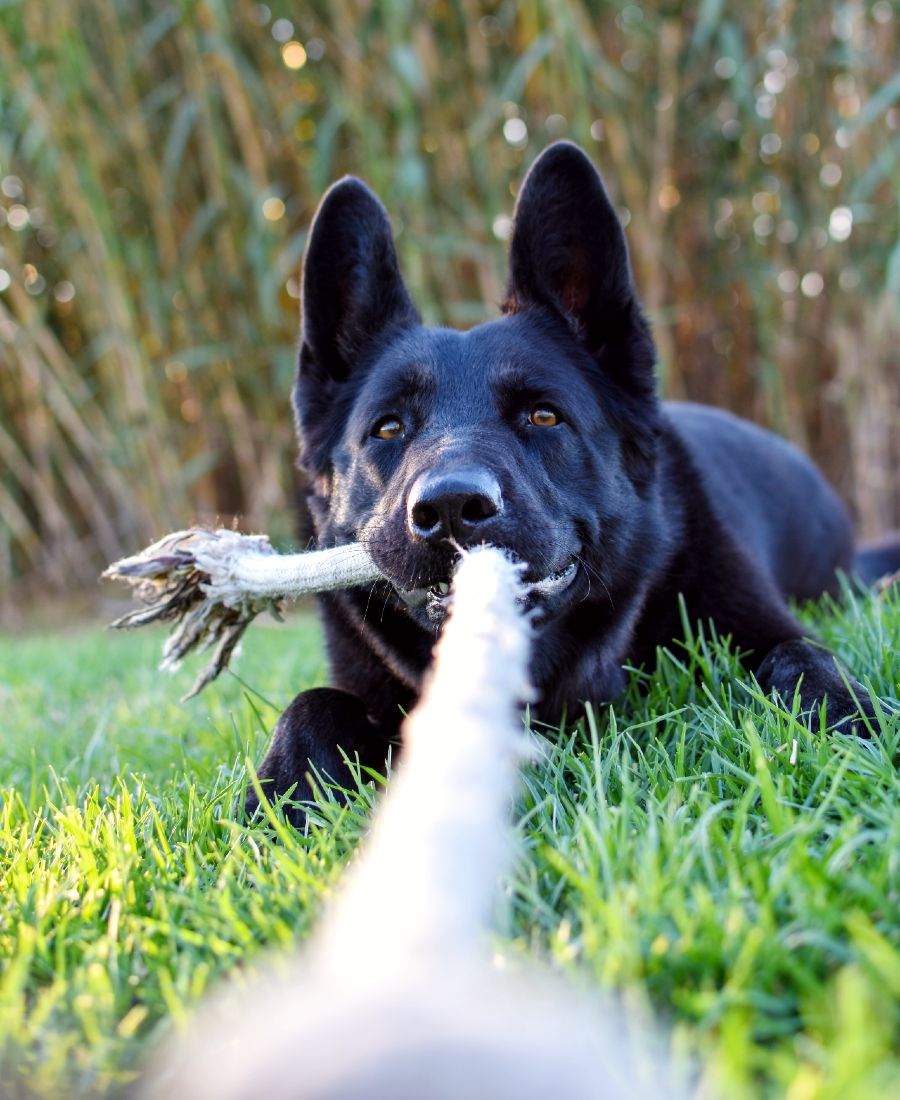
The Importance of Balance
In a balanced dog, the heart, a fire element (yang), and the kidney, a water element (yin), are balanced. From a Western perspective, think of it as the emotional balance everyone has– the ability to maintain equilibrium and adaptability in the face of challenges or changes.
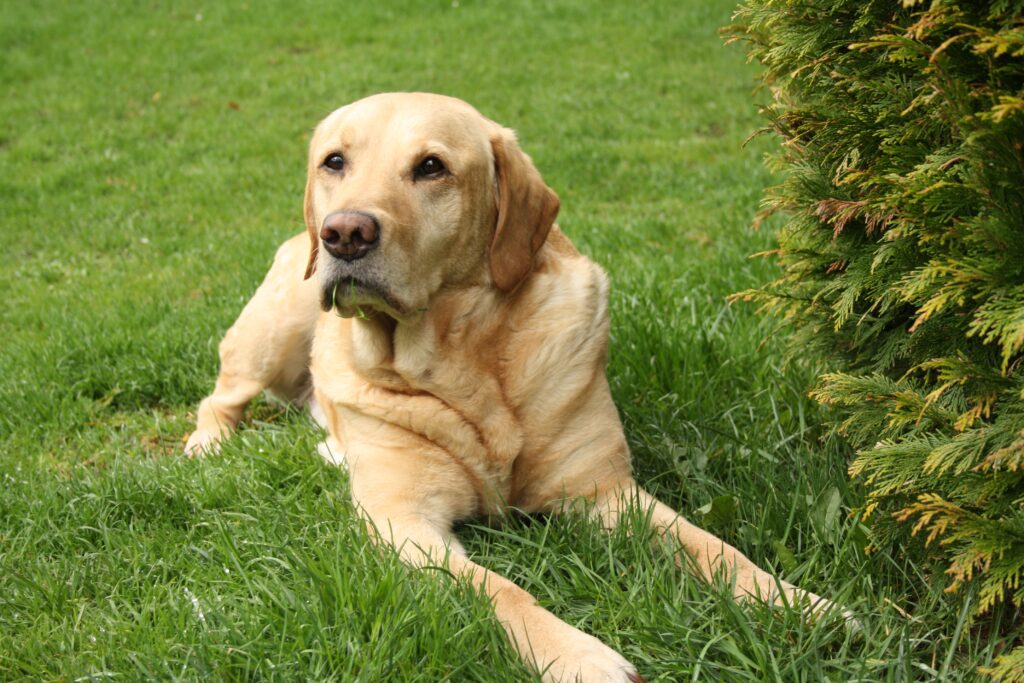
Balance is largely dependent on coordination between the two.
The need for balance makes sense from both a western and eastern perspective. One produces what the other circulates. It’s not unlike how a steam engine requires both fire and water to create the steam that propels movement. Health requires a balance of yin and yang, fire and water, heart and kidney. It’s this imbalance that creates anxiety.
An anxiety dog has this inability to control heat (heart fire).
Essentially, the water element can’t regulate the robust, fire-burning element in overexcited dogs, and that allows nervousness to occur or what we see as the overanxious dog.
To restore your four-legger’s balance– think less emotional highs and lows and more of your dog again, we need to go to the bowl.
Curating the Bowl to Combat Anxiety
The anxiety dog’s bowl will focus on two things.
#1 Bringing Balance to the Heart & Kidney Again
Using spirit-calming herbs like biota seed in tandem with heat-draining herbs like raw Rehmannia root and harmonizing herbs, we can slowly correct the disharmony, this over-anxiousness, and restore emotional balance.
Spirit-Calming Herbs
Potent herbs like biota seed and polygala help calm the spirit while preserving the dog or cat’s unique personality.
Heat-Draining Herbs
Rehmannia, asparagus tuber, ophiopogon, and Scrophularia nourish the kidneys (water organ/think yin) and dispel heat from the heart (fire organ) to restore balance.
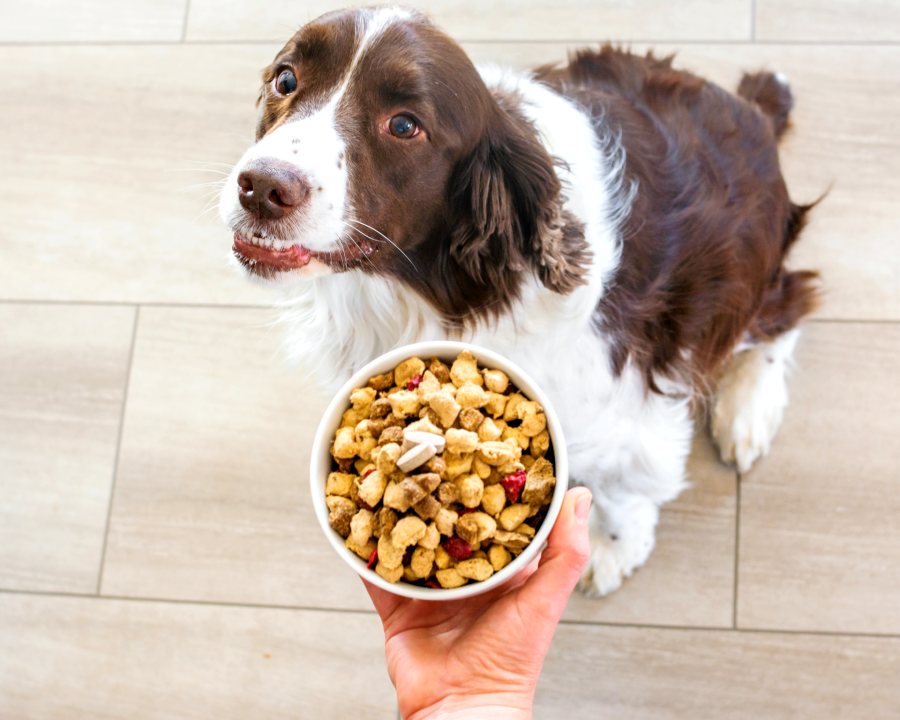
Harmonizing Herbs
These herbs are arguably the crux since they make the other herbs more effective to address the imbalance between heart and kidney, fire and water, yin and yang.
You’ll find these age-old herbal blends in Calm Shen. This combination utilizes the synergistic properties of each herb to offer a natural and effective alternative for those dogs battling with daily, unending anxiety.
It’s a gradual progression towards balance, so the changes are subtle at first, but slowly demeanor begins to change. Your anxious pup isn’t so anxious anymore. The weight of anxiety doesn’t bog them down and you’re asking how it could be the same dog.
#2 Cooling Foods for Calming
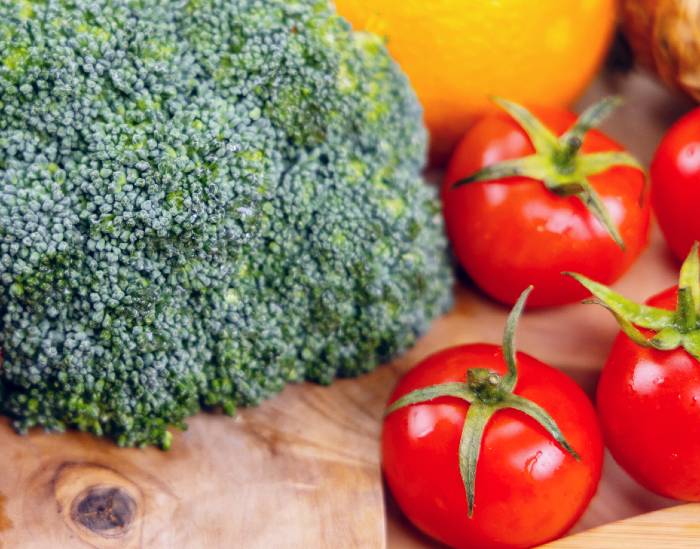
Pre-req: harnessing these techniques require that you’re feeding a species-appropriate diet– real, whole foods made up of 70-80% animal protein with skeletal meats and organs for dogs and 80-90% for kitties. The recipe should contain 25% or fewer carbs from nutrient-rich fruits, veggies, and seeds.
As the calming herbs work to balance the anxiety dog, you can also utilize the principles of food energetics to move the body further towards balance.
Since anxiety dogs have too much heat or emotion, they respond exceptionally well to neutral or cooling foods, whitefish, duck, or rabbit. Dr. Bessent developed a cooling formula that anxiety dogs do exceptionally well with since warming or hot foods like venison or lamb tend to stoke their excitement. (The neutral formula can be rotated in for variety, too.)
Why anxiety happens is complicated because your pup is. They’re complex individuals with opinions, emotions, wants, and needs.
But what we do know is that we can’t dismiss how our dog’s emotions affect their mental health and wellbeing as a whole. Whether you’re contending with the personality of a fire dog, a dog who’s faced with uncertainty and the emotions it brews, or a dog who’s gone through a traumatic experience… each dog needs to be brought back into balance emotionally. And it’s this combination of approaches and tools, including curating the bowl, that is most successful in doing this for the most anxious dogs.
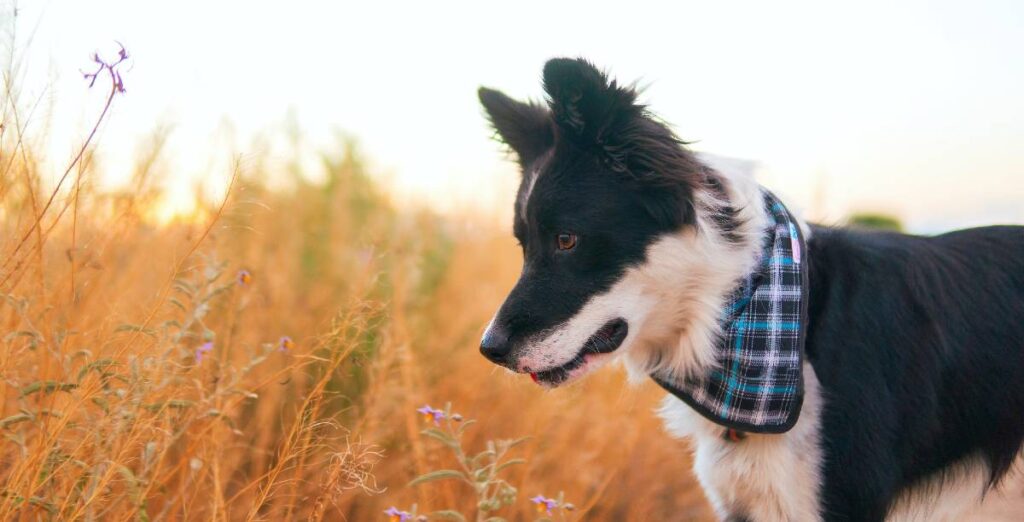
Be conscious of the fact that these tools are not a quick fix. Anxiety isn’t a problem to be solved. It’s a process. You’re gradually helping to balance your dog’s entire way of being, of how they see and interact with the world around them. There are going to be strides forward and a backstep or two because your dog is their own four-legged being. You have to work at and care for your own mental health, and it’s no different for your dog– except you’ve got the tools to help now.
Take the steps and start curating the bowl today.
Or, if you have questions or comments first, don’t hesitate to reach out or drop a line in the comments below.
We’re here to lend a helping paw, and that includes personalized recommendations for your four-legger.
Share this Post
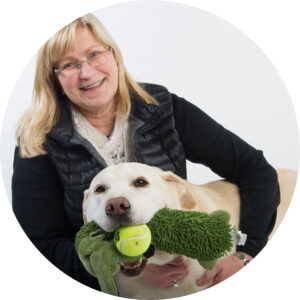
Dr. Chris Besent
Chris Bessent, DVM, MSOM, Dipl. OM, L.Ac. has over thirty years of experience in veterinary medicine including certificates in veterinary acupuncture, veterinary chiropractic and veterinary Chinese herbology. Imbued with Eastern philosophy and the knowledge that food is the foundation of health, Dr. Bessent also received her degree in veterinary nutrition and began to formulate recipes fit for a carnivore from nothing but whole foods. Currently, she divides her time between the Simple Food Project and Herbsmith, both of which are owned and operated out of her facilities in southeastern Wisconsin.

Kayla Behling - Editor
Kayla is the Content Editor for Herbsmith. She has a cat named Professor Cat-Faced Meowmers, who goes by Kitty, and a goof of a dog, named Duck. She stays busy biking trails, playing board games, and searching for the next best craft beer.
